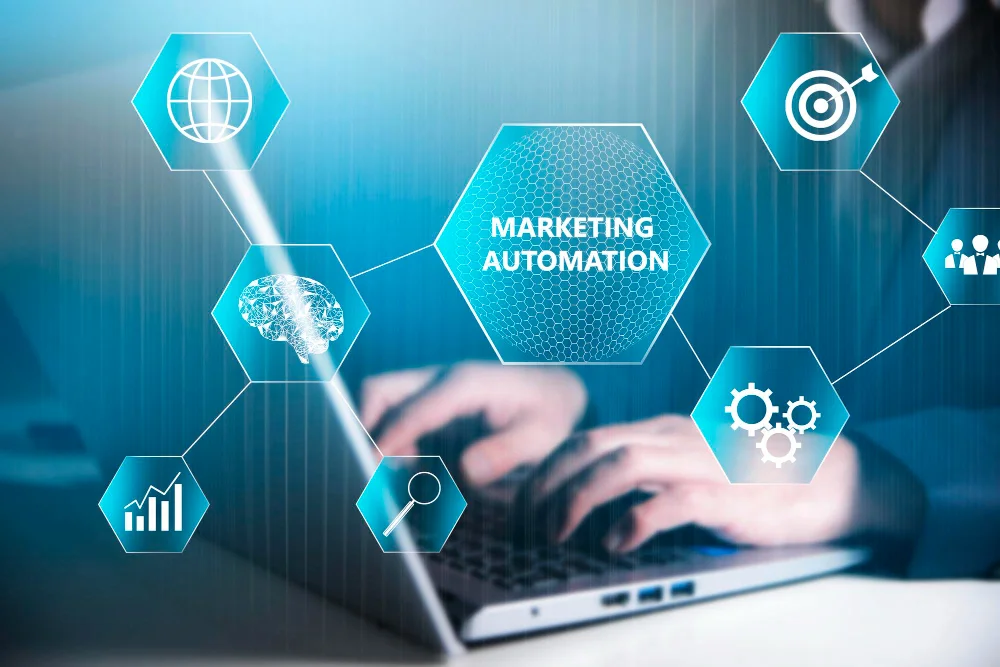Marketing automation is no longer a luxury; it’s a necessity for businesses of all sizes. In today’s digital age, where consumers are bombarded with information, it’s crucial to deliver the right message at the right time to the right audience. This is where marketing automation comes in.
By automating repetitive marketing tasks, you can nurture leads, improve customer engagement, and ultimately drive revenue growth. This comprehensive guide will walk you through the essentials of getting started with marketing automation.
What is Marketing Automation?
Marketing automation utilizes software to automate marketing activities. It allows businesses to streamline marketing efforts by automating tasks such as email marketing, social media posting, and lead nurturing. This frees up marketers to focus on more strategic initiatives.
Benefits of Marketing Automation
Implementing marketing automation offers numerous benefits:
- Increased efficiency: By automating repetitive tasks, you can save time and resources.
- Improved lead generation: Marketing automation helps you identify and nurture leads, increasing conversion rates.
- Enhanced customer engagement: Deliver personalized content and targeted messages to foster stronger customer relationships.
- Better ROI: Marketing automation can lead to improved campaign performance and a higher return on investment.
- Data-driven insights: Track and analyze campaign data to gain valuable insights into customer behavior and preferences.
Steps to Get Started with Marketing Automation
Now that you understand the benefits, let’s explore how to get started with marketing automation:
1. Define Your Marketing Automation Goals
Before diving into marketing automation, it’s crucial to establish clear goals. What do you hope to achieve? Whether it’s lead generation, increased sales, or improved customer retention, defining your objectives will guide your marketing automation strategy.

2. Identify Your Ideal Customer
Understanding your target audience is essential for effective marketing automation. Create detailed buyer personas that outline your ideal customer’s demographics, interests, pain points, and online behavior. This information will help you tailor your automated marketing messages.
3. Choose the Right Marketing Automation Software
Selecting the right marketing automation platform is crucial. Consider your budget, business size, and specific needs. Popular options include HubSpot, Marketo, Pardot, and ActiveCampaign. Research different platforms and choose one that aligns with your requirements.
4. Map Your Customer Journey
Visualize the different stages your customers go through, from initial awareness to becoming loyal advocates. Mapping the customer journey helps you identify key touchpoints and opportunities for marketing automation.
5. Create Valuable Content
Content is king in the digital world. Develop high-quality content that addresses your audience’s needs and interests. This could include blog posts, ebooks, white papers, infographics, and videos. Your content will be used to nurture leads and move them through the sales funnel.
6. Set Up Your Automated Email Campaigns
Email marketing remains a powerful tool. Use your marketing automation platform to create automated email sequences triggered by specific actions or behaviors. For example, you can send welcome emails to new subscribers, abandoned cart emails to shoppers who left items in their online cart, or post-purchase follow-up emails to encourage repeat business.
7. Leverage Social Media Automation
Social media is an integral part of any modern marketing strategy. Marketing automation can help you schedule posts, track mentions, and engage with your audience across various social media platforms.
8. Implement Lead Nurturing Workflows
Lead nurturing is the process of building relationships with potential customers. Use marketing automation to create workflows that deliver targeted content to leads based on their engagement level and stage in the buyer’s journey.
9. Track and Analyze Your Results
One of the significant advantages of marketing automation is the ability to track and measure your results. Monitor key metrics such as website traffic, lead generation, conversion rates, and customer lifetime value. Analyze the data to identify areas for improvement and optimize your marketing automation strategy.
Best Practices for Marketing Automation
To maximize the effectiveness of your marketing automation efforts, consider these best practices:
Personalization
Generic messages often get ignored. Use data and insights gathered through your marketing automation platform to personalize your automated communications. Address your audience by name, recommend products based on their past behavior, and tailor content to their specific interests. This level of personalization can significantly increase engagement and conversion rates.
Segmentation
Not all subscribers are created equal. Divide your audience into smaller, more homogenous groups based on shared characteristics such as demographics, purchase history, or engagement level. This allows you to deliver more targeted messages that resonate with each segment’s specific needs and preferences, improving the effectiveness of your marketing automation efforts.
Consistent Branding
Maintaining a unified brand experience across all touchpoints is essential. Ensure your automated messages, including emails, social media posts, and website content, align with your overall brand identity. Use consistent visuals, tone of voice, and messaging to reinforce your brand and build trust with your audience.
Testing and Optimization
Marketing automation isn’t a “set it and forget it” solution. Continuously test different elements of your automated campaigns, such as subject lines, calls to action, and email content, to identify what works best. Analyze the results and make adjustments to optimize performance and achieve better outcomes.
Value-Driven Content
Focus on providing content and offers that are relevant and valuable to your audience. Avoid overly promotional messages that may turn off potential customers. Instead, offer helpful information, educational resources, exclusive discounts, and other valuable incentives that encourage engagement and build relationships.
Respect Customer Preferences
Give subscribers control over their communication preferences. Provide clear and easy options for managing email frequency, unsubscribing from specific lists, or opting out of all communications. Respecting customer preferences is crucial for building trust and maintaining a positive brand image.
Examples of Marketing Automation in Action
Here are a few examples of how businesses can use marketing automation:
- Welcome email series: Send a series of automated emails to new subscribers, introducing your brand and providing valuable content.
- Abandoned cart reminders: Trigger automated emails to remind shoppers of items left in their online cart, encouraging them to complete their purchase.
- Lead scoring: Assign points to leads based on their engagement level, helping you prioritize your sales efforts.
- Personalized product recommendations: Use data to recommend products or services that align with customer interests.
- Re-engagement campaigns: Send targeted emails to inactive subscribers, encouraging them to re-engage with your brand.
Need All-In-One Marketing Solution?
Conclusion
Marketing automation is a powerful tool that can transform your marketing efforts. By automating repetitive tasks, you can free up time to focus on strategy and creativity. Remember to define your goals, choose the right software, map your customer journey, create valuable content, and track your results. With careful planning and execution, it can help you achieve your marketing objectives and drive business growth.
Contact us TODAY to learn how MBI can help you automate your marketing activities.





2 Responses
This guide is a fantastic resource for beginners to marketing automation.
This is a really helpful guide for anyone looking to get started with marketing automation! I love how you break down the process into clear steps, from defining goals to choosing the right tools. It’s definitely a valuable resource for businesses of all sizes.